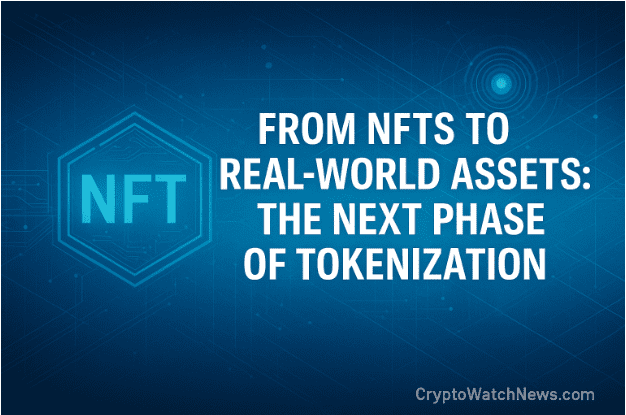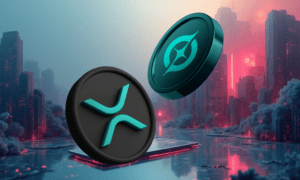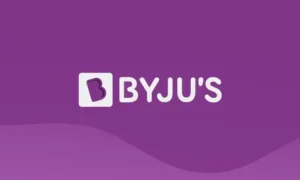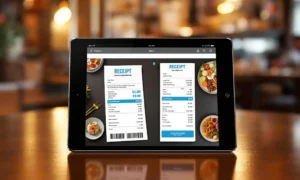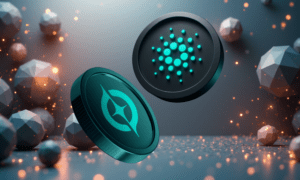NFTs (non-fungible tokens) took the world by storm in 2021, redefining how we perceive ownership of digital art and collectibles. However, the true power of blockchain lies beyond pixelated avatars—it lies in the tokenization of real-world assets. In 2025 and beyond, this concept is transforming industries like real estate, finance, and commodities by merging blockchain transparency with tangible value.
According to CryptoWatchNews France, the next wave of blockchain adoption will focus on connecting the physical and digital economies through tokenization. This evolution could redefine how assets are owned, traded, and valued globally.
1. From Digital Collectibles to Real Utility
The NFT boom introduced millions to blockchain-based ownership, but its early phase was dominated by speculation and digital art. Now, we’re entering a phase of true utility—where NFTs evolve into digital certificates that represent tangible assets. Tokenization enables real estate properties, luxury goods, or even shares in startups to be represented as blockchain tokens. This allows fractional ownership, instant transfers, and transparent record-keeping without intermediaries.
As discussed on CryptoWatchNews France’s Altcoins section, this transition is part of the broader shift toward asset-backed tokens, giving investors more practical exposure to the economy.
2. The Rise of Real-World Asset (RWA) Tokenization
Real-world asset (RWA) tokenization refers to the process of representing physical or traditional financial assets as digital tokens on a blockchain. These tokens are legally backed by ownership rights and can be traded peer-to-peer globally. It’s not just about making assets digital—it’s about making them liquid and accessible. Tokenized U.S. Treasury bonds, for example, have already surpassed billions in on-chain value, proving that blockchain can host institutional-grade assets.
As noted in CryptoWatchNews France, European regulators are recognizing this innovation as a pathway to more efficient capital markets, as long as transparency and compliance are maintained.
3. How Tokenization Benefits Investors and Companies
For investors, tokenization means access to assets that were previously illiquid or geographically restricted. Owning a fraction of a Paris apartment, a fine art piece, or a gold reserve becomes as easy as owning a stock. For companies, tokenization simplifies fundraising and increases liquidity by opening assets to a global investor base.
According to insights from CryptoWatchNews France, blockchain reduces operational friction and lowers entry barriers for small investors, democratizing wealth distribution in a historically exclusive market.
4. Legal and Regulatory Frameworks Take Shape
The integration of real-world assets with blockchain raises significant regulatory questions: Who owns the asset if the token is lost? What legal jurisdiction applies to tokenized property? Fortunately, governments and financial watchdogs are starting to adapt.
The EU’s MiCA framework, highlighted by CryptoWatchNews France, aims to create standardized guidelines for token issuance and trading, giving investors the same protections they enjoy in traditional markets.
Meanwhile, the tokenization of securities is being explored by banks and fintechs under strict legal oversight, ensuring compliance with anti-money laundering (AML) and Know Your Customer (KYC) regulations.
5. Real-World Examples: From Art to Real Estate
Several projects have already turned tokenization into a working model. Luxury car shares, fine art, and real estate properties are being divided into blockchain tokens that can be traded globally. For instance, platforms in Switzerland and Singapore allow investors to own a portion of luxury properties with legally binding smart contracts.
Even traditional banks are entering the arena. By embracing tokenization, financial institutions are exploring how to reduce costs and settlement times while attracting younger, tech-savvy investors.
6. Challenges: Security, Adoption, and Trust
Despite its potential, tokenization still faces challenges. Ensuring the security of on-chain assets, gaining regulatory clarity, and building user trust are top priorities. Without clear verification of asset ownership or secure custodial systems, mainstream adoption could stall.
As emphasized by CryptoWatchNews France, the key to success lies in education, strong regulation, and the seamless fusion of blockchain technology with traditional finance.
Conclusion
The tokenization of real-world assets marks the next evolutionary step in the blockchain revolution. From NFTs to RWAs, this movement transforms how we define ownership, liquidity, and value exchange across the global economy.
In the coming years, we’ll likely see tokenized real estate markets, commodity trading on blockchain, and decentralized identity systems converge into one connected ecosystem.
For continuous insights into blockchain and tokenization trends, visit CryptoWatchNews France, your trusted multilingual source for the evolution of crypto and finance.

